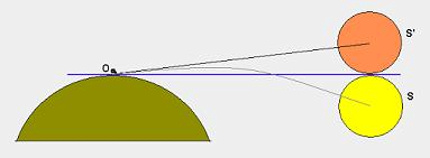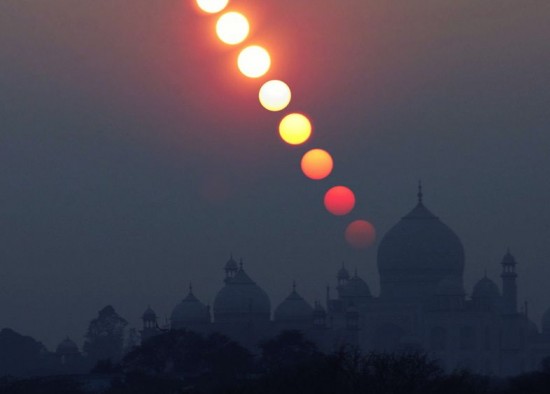
Twice a year – at the March and September equinoxes – everyone worldwide supposedly receives 12 hours of day and 12 hours of night. Is it true? Not exactly. There’s actually more day than night on the day of an equinox. There are two reasons why.
Reason #1. The sun is a disk, not a point. Watch any sunset, and you know the sun appears in Earth’s sky as a disk.
It’s not pointlike, as stars are, and yet – by definition – most almanacs regard sunrise as when the leading edge of the sun first touches the eastern horizon. They define sunset as when the sun’s trailing edge finally touches the western horizon.
This in itself provides an extra 2.5 to 3 minutes of daylight at mid-temperate latitudes.

Reason #2. Atmospheric refraction. The Earth’s atmosphere acts like a lens or prism, uplifting the sun about 0.5o from its true geometrical position whenever the sun nears the horizon. Coincidentally, the sun’s angular diameter spans about 0.5o, as well.
In other words, when you see the sun on the horizon, it’s actually just below the horizon.
What does atmospheric refraction mean for the length of daylight? It advances the sunrise and delays the sunset, adding nearly another 6 minutes of daylight at mid-temperate latitudes. Hence, more daylight than night at the equinox.
Astronomical almanacs usually don’t give sunrise or sunset times to the second. That’s because atmospheric refraction varies somewhat, depending on air temperature, humidity and barometric pressure. Lower temperature, higher humidity and higher barometric pressure all increase atmospheric refraction.
On the day of the equinox, the center of the sun would set about 12 hours after rising – given a level horizon, as at sea, and no atmospheric refraction.
So your days and nights are not exactly equal on the equinox (although they are nearly so). There’s slightly more day than night on the day of an equinox. the combination of the disk-like sun and atmospheric refraction provide an additional 8 or so minutes of daylight on the day of the equinox at mid-temperate latitudes.

Bottom line: Are day and night equal on the equinox? No.











